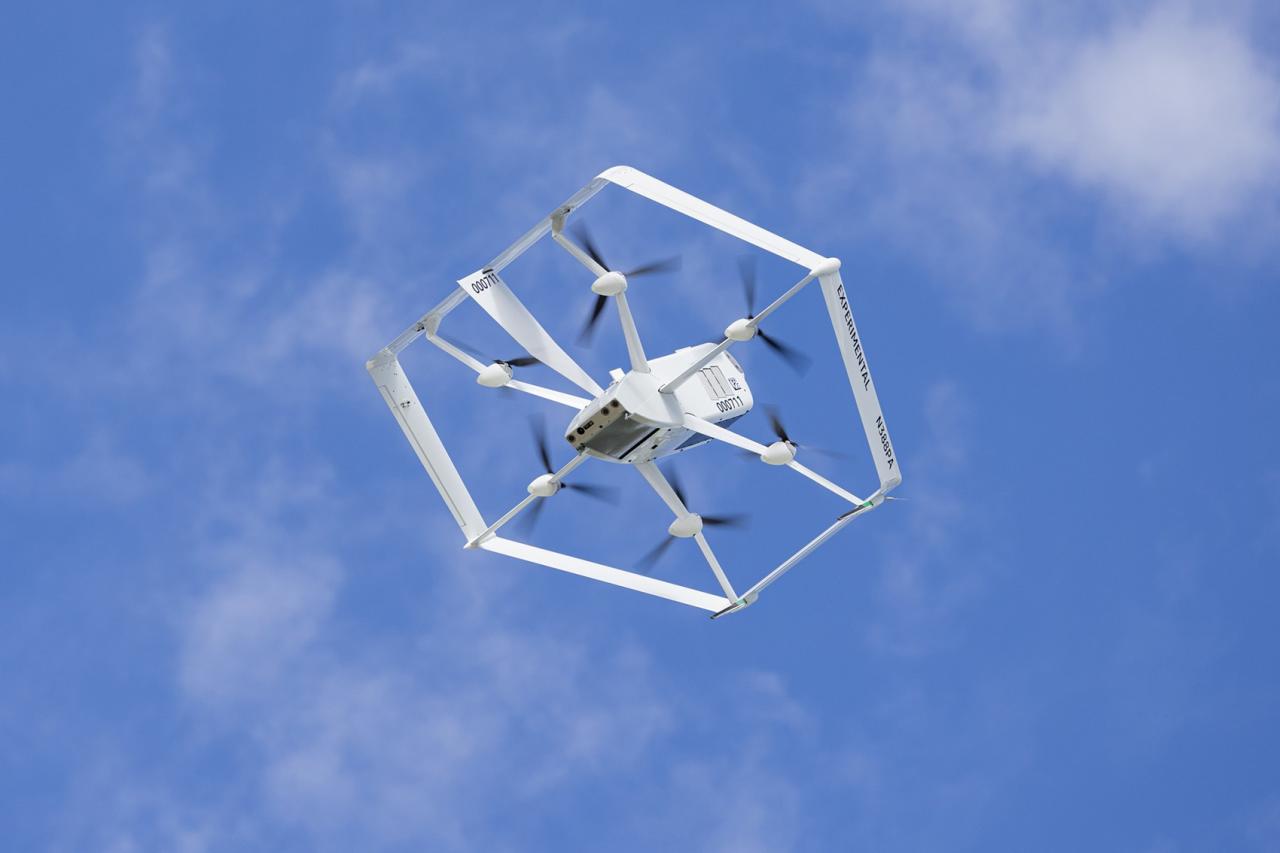Amazon drone delivery locations are rapidly expanding, marking a significant shift in how we receive packages. This innovative approach utilizes unmanned aerial vehicles (UAVs) to deliver goods directly to customers’ doorsteps, promising faster delivery times and reduced reliance on traditional ground transportation. But where exactly are these deliveries happening, and what factors determine which areas are suitable for this cutting-edge technology?
Let’s explore the current landscape of Amazon’s drone delivery program.
The success of Amazon’s drone delivery program hinges on careful location selection. Factors such as population density, airspace regulations, and existing infrastructure all play a crucial role. Urban areas present unique challenges, like navigating congested airspace and finding suitable landing zones, while rural areas pose different obstacles, including longer delivery distances and limited infrastructure. Understanding these complexities is key to understanding the current and future reach of this revolutionary delivery method.
Current Amazon Drone Delivery Program Status
Amazon’s drone delivery program, officially known as Amazon Prime Air, is steadily expanding its reach and capabilities, though it remains a relatively limited service compared to traditional delivery methods. While still in its developmental stages, it represents a significant step towards faster and more efficient delivery solutions.Amazon Prime Air’s current operational scope is geographically restricted. The service isn’t available nationwide, or even across large swathes of the country.
Instead, it operates in select areas, often focusing on suburban or less densely populated regions where drone flight is easier to manage and regulate. The specific locations are constantly evolving as Amazon expands its testing and operational capabilities.
Geographical Scope of Amazon Drone Delivery
Currently, Amazon Prime Air’s drone delivery service is operational in a limited number of locations, primarily in the United States. These locations are carefully chosen based on factors such as airspace regulations, population density, and infrastructure availability. The company is gradually expanding its operational areas, but a widespread rollout remains some time away. For example, initially, drone deliveries were confined to a small area in Lockeford, California.
The program has since expanded to other locations, but the exact number and specifics are not publicly released by Amazon in a comprehensive list.
Types of Goods Eligible for Drone Delivery
The types of goods currently eligible for Amazon Prime Air delivery are limited. Generally, these are smaller, lighter packages that can safely and easily be transported by the drones. Amazon carefully vets items to ensure they meet weight, size, and fragility requirements. Think lightweight everyday items such as books, electronics accessories, and small household goods. Heavier or more fragile items are not suitable for drone delivery at this time.
Technological Infrastructure Supporting Amazon Drone Delivery
Amazon’s drone delivery program relies on a complex technological infrastructure. This includes a network of drone delivery centers, sophisticated drone technology equipped with advanced sensors and autonomous flight capabilities, and robust software systems for flight planning, monitoring, and package tracking. The drones themselves are designed for vertical takeoff and landing (VTOL), enabling them to operate from relatively small launch and landing pads.
Furthermore, real-time monitoring and control systems are essential to ensure safe and efficient drone operation, requiring constant communication between the drones and Amazon’s ground control stations. The system also incorporates obstacle avoidance technology and contingency plans for unforeseen circumstances.
Timeline of Significant Milestones
Amazon first publicly announced its Prime Air initiative in 2013. While initial projections for widespread deployment were overly optimistic, the company has made significant progress. Early testing focused on proving the feasibility of autonomous drone delivery. Subsequent milestones have included obtaining regulatory approvals, refining drone technology, and establishing operational infrastructure. More recent milestones have involved expanding the number of delivery locations and refining the logistics of drone-based delivery operations.
A precise timeline detailing each step is not consistently released by Amazon. However, the progression from initial concept to limited operational deployment represents a significant accomplishment in the field of autonomous delivery.
Factors Influencing Location Selection for Drone Delivery
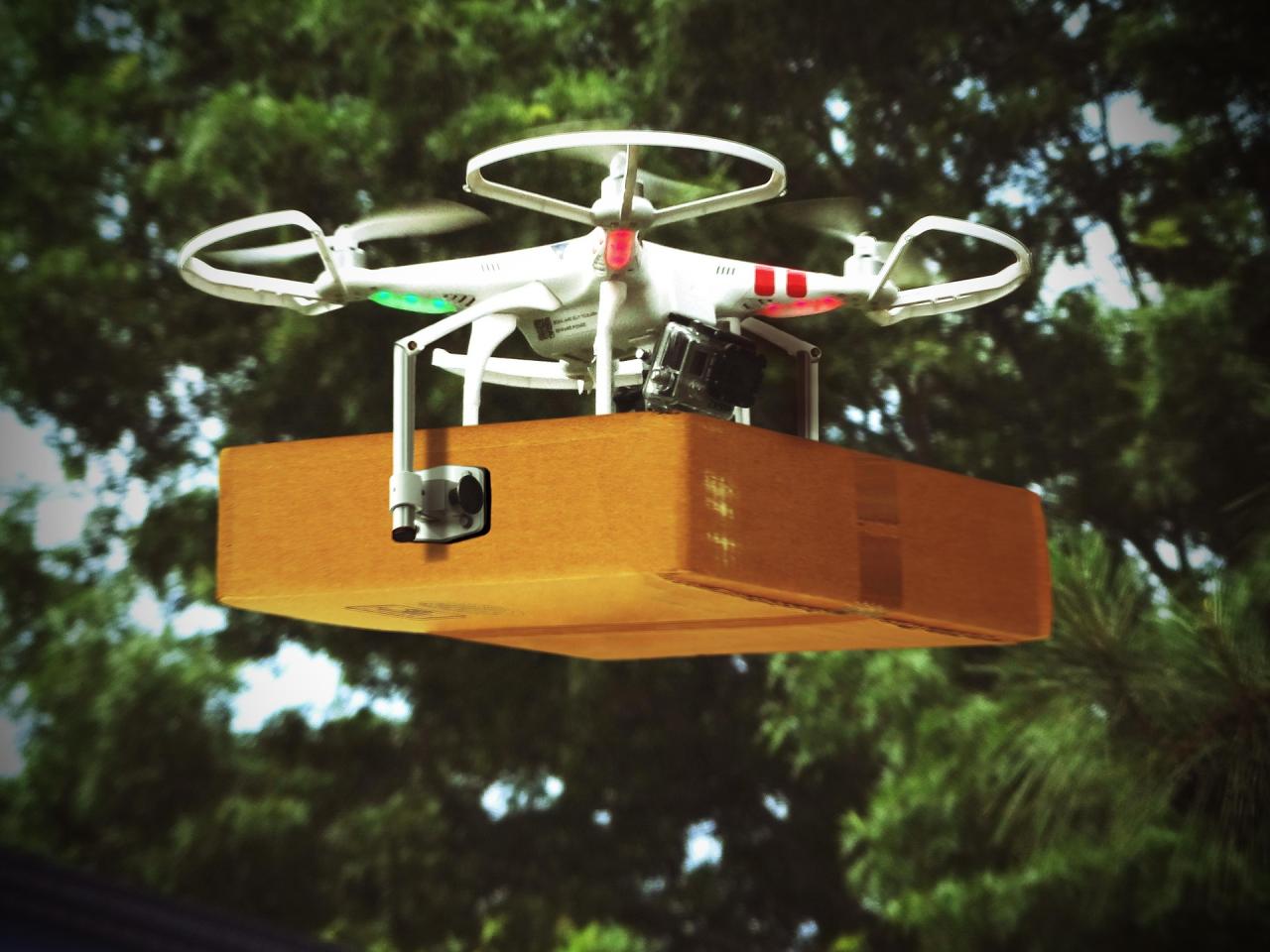
Choosing the right locations for Amazon’s drone delivery service is a complex process, requiring careful consideration of various logistical, regulatory, and environmental factors. The goal is to maximize efficiency and safety while ensuring a positive customer experience. Successful location selection directly impacts the feasibility and profitability of the entire operation.Logistical Considerations for Drone Delivery Locations
Population Density and Suitable Areas
Population density plays a crucial role in determining the viability of drone delivery in a given area. High population density areas, such as suburbs and densely populated urban centers, offer a larger potential customer base, making the operation economically attractive. However, navigating congested airspace and managing the increased complexity of delivery routes in these areas present significant challenges.
Conversely, sparsely populated rural areas present different challenges, including longer delivery distances, potentially requiring more powerful drones and increased flight times. The ideal scenario often involves a balance – areas with sufficient population density to justify the investment, but with enough open airspace to enable safe and efficient drone operations. For example, a suburban area with a mix of residential housing and some open space might be more suitable than a densely packed downtown core or a vast, isolated rural region.
Urban versus Rural Deployment Challenges
Urban deployments face unique obstacles. Tall buildings, complex airspace, and the presence of numerous obstacles like power lines and trees necessitate sophisticated drone navigation systems and potentially more restrictive flight paths. Regulatory hurdles, such as airspace restrictions and noise ordinances, are also more stringent in urban environments. Rural deployments, on the other hand, present challenges related to distance, infrastructure limitations, and potentially less reliable internet connectivity, which is critical for real-time drone monitoring and control.
So you’re curious about where Amazon’s delivering packages via drone, huh? It’s pretty cool tech! To get a clearer picture of the current operational areas, check out this helpful resource on amazon drone delivery locations. Knowing these locations helps you understand the rollout and perhaps even see if your area is next in line for this futuristic delivery method.
Amazon drone delivery locations are expanding, so keep an eye out!
For instance, delivering packages to a remote farm might require longer flight times and more robust drone batteries compared to delivering to a house in a well-connected suburb.
Impact of Airspace Regulations on Location Selection
Airspace regulations significantly impact location selection. The Federal Aviation Administration (FAA) and other international aviation authorities impose restrictions on where and how drones can operate. No-fly zones near airports, military bases, and other sensitive areas severely limit potential delivery locations. Regulations regarding maximum altitude, speed, and operational hours also need to be factored in. For example, an area close to an airport might be entirely unsuitable for drone delivery due to stringent airspace restrictions, whereas a designated drone corridor or designated airspace could be more favorable.
Companies must meticulously map airspace restrictions and ensure their drone operations comply with all applicable regulations to avoid penalties and ensure safe operations.
Amazon’s expanding drone delivery network is reaching more locations, aiming for faster and more efficient shipping. However, incidents like the one highlighted in this report on the orlando drone show accident remind us of the importance of safety and reliable technology in drone operations. These kinds of accidents underscore the need for robust safety protocols as Amazon continues to develop its drone delivery locations.
Infrastructure and Technological Requirements
Successfully implementing Amazon drone delivery requires a robust and adaptable infrastructure capable of supporting the complex operations involved. This includes not only the physical infrastructure for drone operations but also the sophisticated communication and safety systems needed to ensure efficient and safe delivery. Careful consideration of environmental factors is also critical to successful deployment.
Establishing a functional drone delivery network necessitates a well-defined infrastructure plan. This includes strategically located charging stations and maintenance facilities, reliable communication networks, and comprehensive safety protocols. The following sections detail the key elements of this infrastructure and address the technological challenges involved in various operational environments.
Hypothetical Infrastructure Map for a New Drone Delivery Location
The following table Artikels a hypothetical infrastructure map for a new drone delivery location in a suburban area, encompassing various infrastructure needs and their associated costs. These figures are estimates and would vary based on specific location details and technology used.
| Location | Infrastructure Type | Capacity | Estimated Cost (USD) |
|---|---|---|---|
| Central Hub | Main Warehouse, Charging Station (100 drones), Maintenance Facility | 100 Drones, 10,000 packages/day | $5,000,000 |
| Suburban Node 1 | Charging Station (20 drones), Small Maintenance Bay | 20 Drones, 2,000 packages/day | $500,000 |
| Suburban Node 2 | Charging Station (20 drones), Small Maintenance Bay | 20 Drones, 2,000 packages/day | $500,000 |
| Mobile Maintenance Unit | Truck-mounted maintenance and repair unit | On-site drone repairs | $250,000 |
Drone Communication Systems
Effective drone navigation and control rely heavily on robust communication systems. These systems must ensure continuous connectivity between the drones, ground control stations, and other relevant infrastructure components. Reliable communication is paramount for real-time monitoring, command execution, and emergency response.
Amazon’s expanding drone delivery network is aiming for wider coverage, but safety is paramount. Recent incidents, like the drone crash in Paris , highlight the challenges involved in urban air traffic management. Understanding these risks is crucial for determining suitable Amazon drone delivery locations and ensuring reliable service in the future.
A typical system might incorporate a combination of technologies, including:
- Cellular Networks (4G/5G): Provide wide-area coverage for communication over longer distances.
- Wi-Fi: Used for short-range, high-bandwidth communication, particularly in the vicinity of charging stations and hubs.
- Satellite Communication: Offers backup communication in areas with limited cellular or Wi-Fi coverage.
- Dedicated Drone Network: A private network optimized for drone communication, reducing interference and enhancing reliability. This is becoming increasingly important as drone traffic increases.
Technological Challenges in Different Environments
The effectiveness of drone delivery is significantly influenced by the operational environment. Different terrains and atmospheric conditions pose unique technological hurdles.
- Mountainous Regions: Challenges include signal loss due to terrain blockage, strong winds affecting flight stability, and limited landing zones. Advanced obstacle avoidance systems and robust communication networks are crucial. Examples include using specialized antennas and employing alternative communication methods like satellite links.
- Dense Urban Areas: Navigating congested airspace, tall buildings, and unpredictable weather conditions present significant challenges. Sophisticated GPS and sensor systems, coupled with advanced flight planning algorithms, are needed. The use of visual-inertial odometry (VIO) to aid GPS in dense urban canyons is a key technological solution.
- Adverse Weather Conditions: Rain, snow, and strong winds can severely impact drone operations. Advanced weather forecasting and real-time weather monitoring systems are essential, alongside drones with robust weather resistance capabilities. Systems need to account for reduced visibility and potential icing conditions.
Safety Features and Protocols for Drone Operations, Amazon drone delivery locations
Safety is paramount in drone delivery operations. A comprehensive set of safety features and protocols must be implemented to mitigate risks and ensure safe operations. These measures are crucial for preventing accidents and maintaining public trust.
- Redundant Systems: Multiple sensors, communication channels, and power sources to ensure operational reliability even in case of component failure.
- Geo-fencing: Restricting drone flight within predefined geographical boundaries to prevent unauthorized access or accidental entry into restricted airspace.
- Automatic Emergency Landing Systems: Automatic landing procedures triggered in case of communication loss, low battery, or other critical situations.
- Obstacle Detection and Avoidance: Sophisticated sensor systems (LiDAR, cameras, radar) to detect and avoid obstacles during flight.
- Regular Maintenance and Inspections: Scheduled maintenance and thorough inspections of drones and infrastructure to ensure optimal operational safety.
- Pilot Training and Certification: Rigorous training programs and certification processes for drone pilots to ensure proficiency and adherence to safety regulations.
- Real-time Monitoring and Control: A centralized control system to monitor drone operations, receive alerts, and intervene in emergencies.
Public Perception and Societal Impact
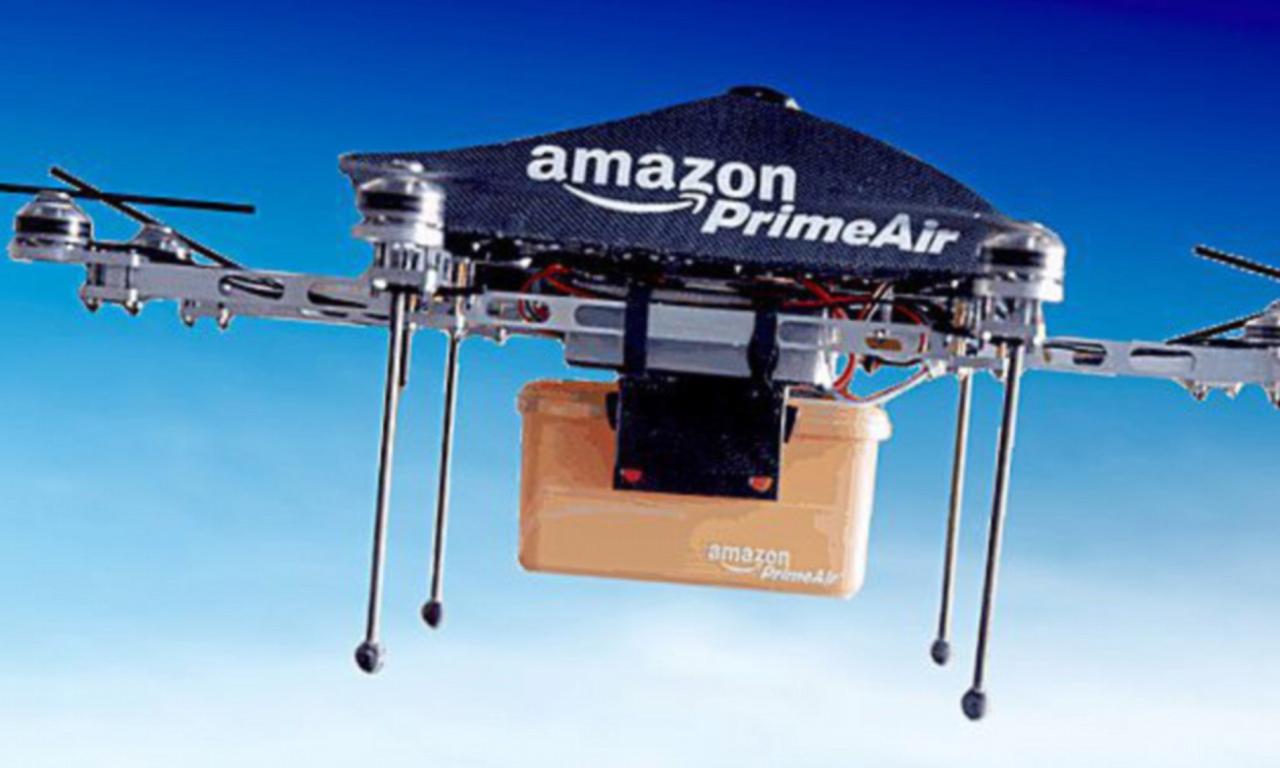
The introduction of Amazon drone delivery presents a complex interplay of benefits and concerns for the public. Successful implementation hinges on addressing potential negative impacts while maximizing the positive aspects for both consumers and the wider community. Careful consideration of public perception is crucial for the long-term viability of this technology.Drone delivery, while offering efficiency and convenience, raises several important societal questions.
A key area of concern is the potential for negative impacts on communities and the environment. Balancing innovation with responsible implementation requires a thorough understanding of these potential consequences.
Noise Pollution from Drone Deliveries
The noise generated by delivery drones is a significant concern for residents in potential delivery zones. The whirring of rotors, especially during frequent deliveries, could lead to noise pollution, potentially disrupting the peace and quiet of neighborhoods. This is particularly relevant in densely populated areas or areas with existing noise issues. Mitigation strategies, such as quieter drone designs and optimized flight paths, are crucial to minimize this impact.
Studies comparing the noise levels of drones to existing sources of urban noise, like traffic or construction, would help establish a baseline for acceptable noise levels in residential areas. For example, a comparison might show that the noise level of a drone is comparable to a nearby construction site during a less active period, potentially allaying some fears.
Benefits of Drone Delivery for Consumers and Businesses
The potential benefits of drone delivery for consumers and businesses in selected locations are numerous and significant. These advantages extend beyond mere convenience, impacting various aspects of commerce and daily life.
- Faster Delivery Times: Drones can significantly reduce delivery times, especially for urgent or time-sensitive items, providing a competitive edge for businesses.
- Increased Accessibility: Drone delivery can reach remote or hard-to-access locations, improving access to goods and services for consumers in previously underserved areas. This is particularly beneficial in rural communities or areas with poor road infrastructure.
- Reduced Delivery Costs: For businesses, the potential for lower delivery costs through drone technology could lead to increased profitability and competitiveness.
- Improved Customer Satisfaction: Faster and more reliable delivery services often translate to increased customer satisfaction and loyalty.
- Enhanced Efficiency for Businesses: Businesses can streamline their logistics and optimize their delivery processes, leading to cost savings and improved operational efficiency.
Environmental Impact of Drone Delivery
The environmental impact of drone delivery is a complex issue requiring careful evaluation. While drones offer potential benefits in reducing traffic congestion and associated emissions, their own environmental footprint needs to be considered.Compared to traditional delivery methods, the environmental impact of drone delivery is multifaceted. On one hand, drones could potentially reduce carbon emissions by decreasing the number of delivery trucks on the road.
This reduction in vehicular traffic would lead to less fuel consumption and fewer greenhouse gas emissions. On the other hand, the manufacturing and operation of drones themselves require energy and resources, leading to their own emissions. The overall environmental impact will depend on factors such as the type of drone, its energy source, the frequency of use, and the distances covered.
Life cycle assessments, comparing the environmental impact of drones across their entire lifespan (from manufacturing to disposal), are needed to provide a comprehensive understanding. For example, a study could compare the total carbon footprint of delivering a package via a drone versus a delivery truck, taking into account manufacturing, fuel consumption, and end-of-life disposal.
Job Displacement and Creation Potential
The introduction of drone delivery technology has the potential to both displace and create jobs. While some jobs in traditional delivery services might be automated, new roles in drone maintenance, operation, and management will emerge.The impact on employment is likely to be a net positive, although it may vary depending on the region and the specific industry. For instance, jobs in traditional courier services might be reduced, particularly those involving short-distance deliveries.
However, this reduction will likely be offset by the creation of new jobs in areas such as drone piloting (though many operations are expected to be autonomous), drone maintenance and repair, software development for drone control systems, and logistics management related to drone operations. Furthermore, the growth of the drone delivery industry could stimulate economic growth in related sectors, leading to indirect job creation.
A detailed analysis, possibly incorporating regional economic models, would be needed to accurately predict the net impact on employment in different areas. For example, a comparison of job creation and displacement in regions with high reliance on traditional delivery services versus regions with less developed delivery infrastructure could provide valuable insights.
Future Expansion and Potential
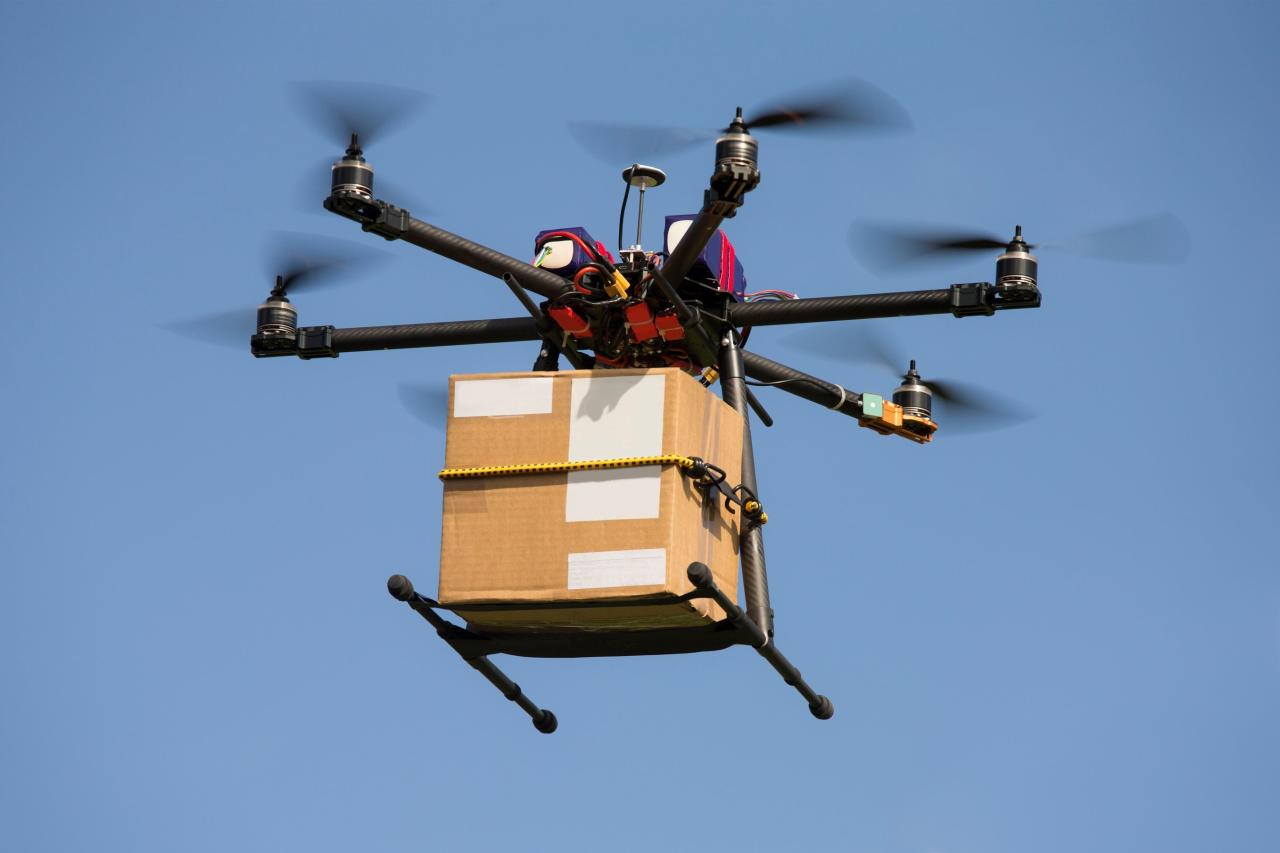
Amazon’s drone delivery program, while still in its relatively early stages, holds immense potential for future growth and expansion. The current limitations, primarily related to range, weather conditions, and regulatory hurdles, are gradually being overcome through technological advancements and evolving regulatory landscapes. This section will explore the key areas of future expansion, the role of automation and AI, innovative solutions addressing current limitations, and the potential integration with other Amazon logistics services.The expansion of Amazon’s drone delivery service will likely follow several key trajectories.
Geographic expansion to new regions with suitable infrastructure and regulatory environments is a primary focus. This includes both urban and rural areas where traditional delivery methods may be less efficient or cost-effective. Furthermore, we can anticipate an increase in the types of goods delivered via drone, moving beyond smaller packages to potentially include larger, heavier items as drone technology advances.
Geographic Expansion and Service Expansion
Amazon’s drone delivery program will likely expand geographically to areas with less dense populations, where the cost and time savings compared to traditional delivery methods are most significant. Rural communities, for instance, could benefit greatly from faster and more reliable delivery of essential goods. Simultaneously, expansion into new urban areas, particularly those with established drone corridors and supportive regulatory frameworks, will also be a key focus.
This expansion will be coupled with an increase in the variety of goods delivered, starting with the addition of heavier or larger items, provided technology improves payload capacity and safety measures. We could also see specialized drone delivery services tailored to specific needs, like urgent medical supplies or time-sensitive business documents. For example, Amazon could partner with healthcare providers to deliver critical medical supplies to remote clinics or hospitals.
Automation and AI in Enhancing Efficiency
Automation and AI are pivotal to improving the efficiency and scalability of drone delivery. AI-powered route optimization algorithms can significantly reduce delivery times and fuel consumption by dynamically adjusting flight paths based on real-time traffic, weather conditions, and other factors. Autonomous drone operations, minimizing human intervention, will increase the number of deliveries possible within a given timeframe. Furthermore, AI-powered predictive maintenance can anticipate potential mechanical issues, reducing downtime and enhancing the overall reliability of the drone fleet.
For instance, an AI system could analyze flight data to predict when a drone requires maintenance, allowing for proactive servicing and preventing unexpected failures. This would minimize service disruptions and increase the overall operational efficiency of the drone delivery system.
Innovative Solutions Addressing Current Limitations
Several innovative solutions are emerging to address the limitations of current drone delivery technology. Improvements in battery technology, such as the development of longer-lasting and more efficient batteries, will significantly extend the range and operational time of drones. Advanced sensor technologies, including improved obstacle avoidance systems and enhanced weather detection capabilities, will improve safety and reliability in various environmental conditions.
Furthermore, the development of hybrid drone systems, combining drone capabilities with ground-based transportation for longer distances, will overcome the limitations of purely aerial delivery. For example, a drone could deliver a package to a designated ground station outside of a city, where a ground vehicle then completes the last leg of the delivery. This combined approach leverages the strengths of both aerial and ground-based delivery methods.
Integration with Other Amazon Logistics Services
The integration of drone delivery with other Amazon logistics services holds significant potential for streamlining the overall delivery process. Drone delivery can be seamlessly integrated with existing fulfillment centers and delivery networks, acting as a “last-mile” solution to expedite deliveries. This could involve drones transporting packages from regional distribution centers to smaller delivery hubs or directly to customers’ homes, reducing delivery times and costs.
Such integration would require advanced coordination and communication between different logistics systems, including real-time tracking and data sharing between drones, ground vehicles, and fulfillment centers. This integrated approach could result in a more efficient and cost-effective logistics network, further enhancing Amazon’s competitive advantage.
Illustrative Example
Let’s trace a hypothetical drone delivery route to understand the complexities involved in Amazon’s drone delivery system. This example focuses on a single delivery, highlighting the technological aspects and challenges encountered.This scenario depicts a drone delivering a package from a suburban fulfillment center to a residential address approximately 5 kilometers away. The flight path will navigate a variety of obstacles and utilize several key technological features.
Drone Delivery Route Details
The drone, a hexacopter equipped with advanced obstacle avoidance systems and GPS, takes off from a designated launchpad within the Amazon fulfillment center. Its initial ascent is gradual, reaching a pre-programmed altitude of 120 meters to avoid low-flying aircraft and obstacles. The flight path is pre-planned using sophisticated algorithms that take into account real-time weather data, air traffic information, and a 3D map of the delivery area.
The route is designed to minimize flight time and energy consumption while adhering to all safety regulations.The drone follows a primarily straight path, but adjusts its course several times to avoid unexpected obstacles. For example, it smoothly circumvents a flock of birds detected by its onboard sensors, and expertly navigates around a tall tree near the delivery address. The drone’s onboard cameras continuously monitor the environment, feeding real-time data to its AI-powered navigation system.
This system makes instantaneous adjustments to the flight path, ensuring safe and efficient delivery.The final approach to the delivery location is carefully executed. The drone descends slowly, using its downward-facing cameras to identify the designated drop-off zone – a small, marked area in the customer’s backyard. Once the location is confirmed, the drone uses a precision mechanism to gently release the package, deploying a parachute for a soft landing.
The entire flight, including takeoff, navigation, and landing, takes approximately 15 minutes.
Technological Components Involved
Several key technological components work together to make this delivery possible. The drone’s flight control system, incorporating GPS, IMU (Inertial Measurement Unit), and barometer, ensures precise navigation and stability. Advanced obstacle avoidance systems, utilizing lidar and computer vision, allow the drone to detect and avoid obstacles in real-time. The secure communication system maintains constant contact with the fulfillment center, providing real-time flight data and allowing for remote monitoring and control.
Finally, the package delivery mechanism, incorporating a safe release and parachute deployment system, guarantees safe and damage-free delivery.
Wrap-Up: Amazon Drone Delivery Locations
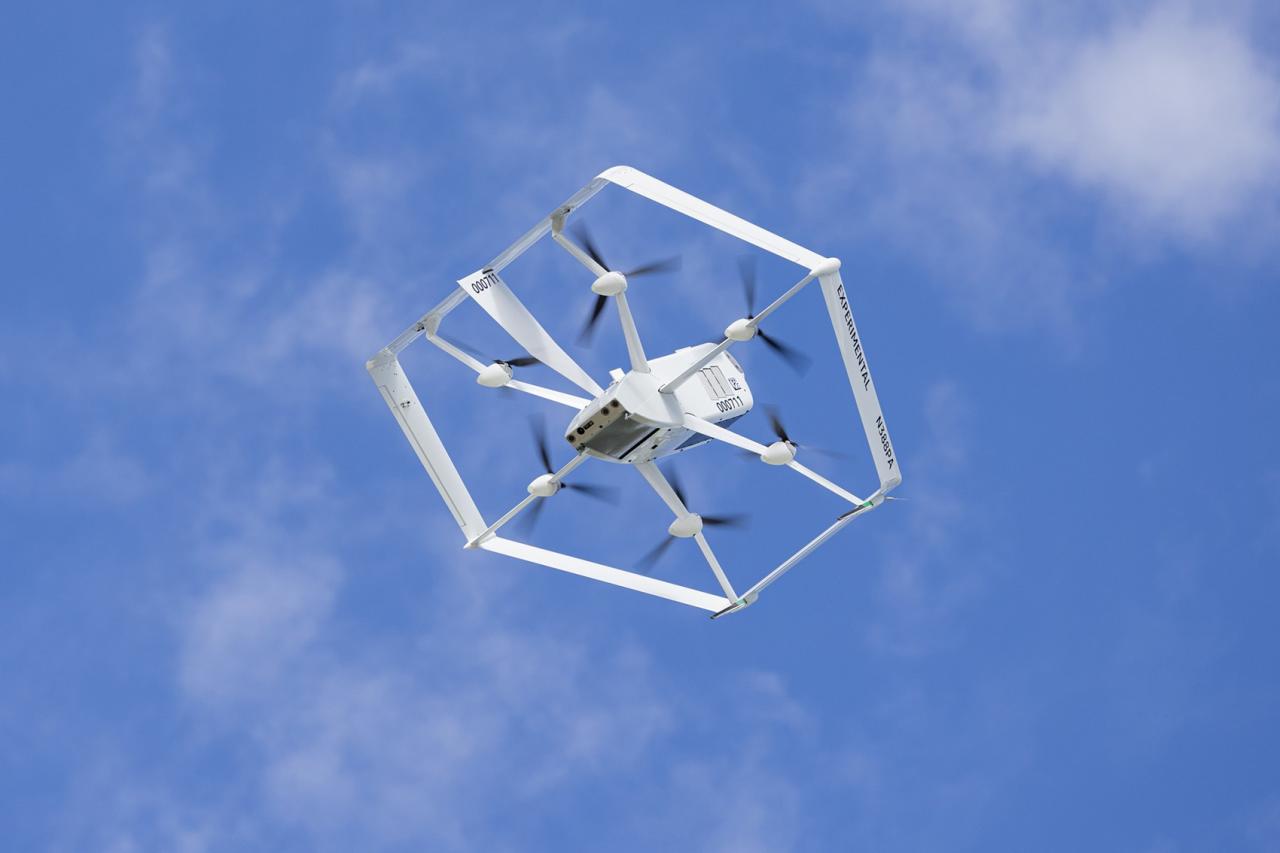
Amazon’s drone delivery program represents a bold step towards a faster, more efficient future of logistics. While challenges remain, the potential benefits—from faster deliveries to reduced environmental impact—are significant. As technology continues to advance and regulations evolve, we can expect to see a substantial expansion of Amazon drone delivery locations, transforming how we receive our online purchases. The future of delivery is in the air, and it’s only just beginning to take flight.
FAQ Resource
How long does a drone delivery take?
Delivery times vary depending on distance and other factors, but generally, Amazon aims for deliveries within 30 minutes or less.
What happens if the drone encounters bad weather?
Amazon’s drones are equipped with weather sensors and will automatically return to base or abort the delivery if conditions become unsafe.
Are there weight restrictions for drone deliveries?
Yes, there are weight limits on packages eligible for drone delivery. These limits are designed to ensure the safety and stability of the drone during flight.
What type of packages can be delivered by drone?
Currently, drone deliveries are primarily limited to smaller, lightweight packages. The types of items eligible may vary depending on the location and delivery system.
